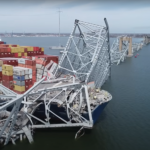An estimated 9,330 people died in traffic crashes in the first three months of 2023, down 3.3 percent compared to the 9,645 estimated fatalities during the same time in 2022, according to the National Highway Traffic Safety Administration (NHTSA).
The first quarter of 2023 represents the fourth straight quarterly decline in fatalities after seven consecutive quarters of year-to-year increases in fatalities, beginning with the third quarter of 2020, the agency noted.
“After spiking during the pandemic, traffic deaths have been on a slow but consistent decline for the past year,” said U.S. Transportation Secretary Pete Buttigieg. “This is an encouraging sign as we work to reverse the rise in roadway deaths, but there is much more work ahead to reinforce this downward trend and make it permanent.”
The projected decrease occurred as a 2.6 percent increase in vehicle miles traveled was recorded.
The estimated fatality rate for the first three months of 2023 decreased to 1.24 fatalities per 100 million vehicle miles traveled, the agency reported, down from the projected rate of 1.32 during the same time in 2022.
“This is very good news, but we know that far too many people are dying on our roadways in preventable crashes,” said NHTSA Chief Counsel Ann Carlson. “We are taking significant action to reduce traffic fatalities, including moving forward on new vehicle standards to make cars even safer, investing millions of dollars to improve infrastructure and roadway safety, and working with our state and local partners to help drivers make safe decisions on the road.”
NHTSA estimates that for the first three months of 2023, fatalities decreased in 32 states, while 18 states and Puerto Rico have projected increases in fatalities as compared to the same period in 2022. The District of Columbia remained unchanged.
Last January, Secretary Buttigieg unveiled the Department’s National Roadway Safety Strategy (NRSS) to address the national crisis in traffic fatalities and serious injuries. The NRSS adopts the safe system approach through multiple layers of protection via safer roads, safer people, safer vehicles, safer speeds and better post-crash care.
The NRSS is complemented by unprecedented safety funding included in President Biden’s Bipartisan Infrastructure Law, including the new Safe Streets and Roads for All grant program.
In February, the Department announced over $800 million in grant awards for more than 500 communities to help carry out projects that can address high-crash areas.
The DOT also launched the next phase of the NRSS, its Call to Action campaign, and released a one-year progress report and accompanying data visualizations that highlight the extent and magnitude of the U.S. roadway safety problem.





















 The Supreme Court Just Complicated Employer Diversity Initiatives
The Supreme Court Just Complicated Employer Diversity Initiatives  Progressive Gains as Drivers Shop Around for Auto Insurance—Again
Progressive Gains as Drivers Shop Around for Auto Insurance—Again  Maritime Law Invoked By Ship Owner in Baltimore Bridge Collapse to Cover Salvage Costs
Maritime Law Invoked By Ship Owner in Baltimore Bridge Collapse to Cover Salvage Costs  Chubb Gets Its Paws on Pet Insurance MGA
Chubb Gets Its Paws on Pet Insurance MGA 



